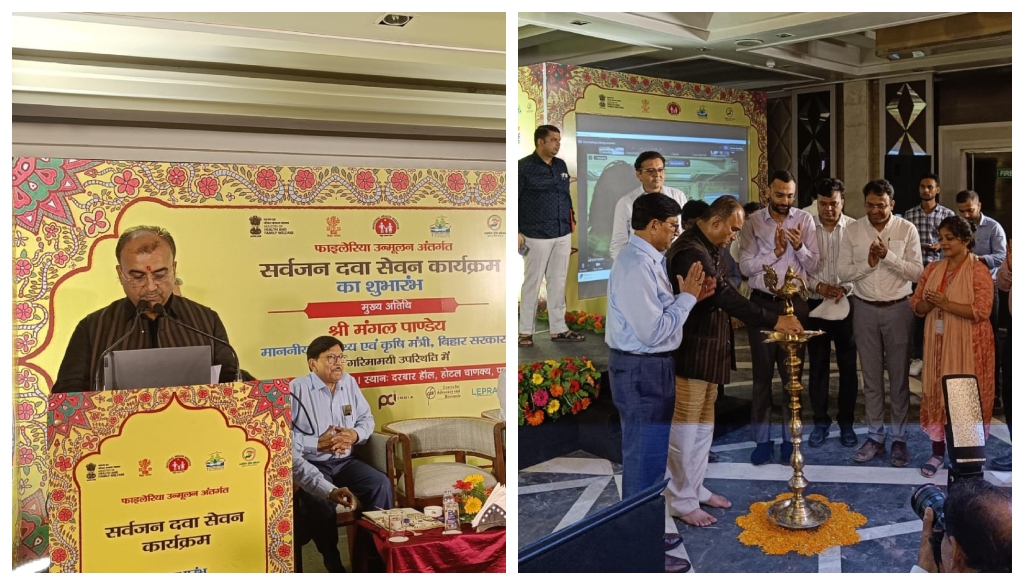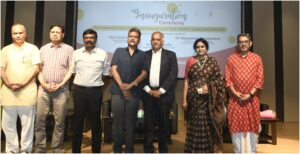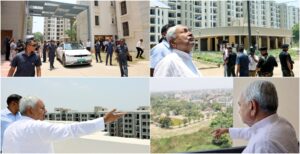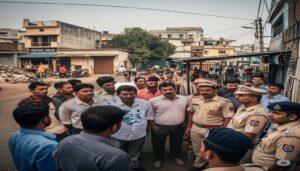Bihar Launches Mass Drug Administration to Combat Filariasis Across 13 Districts

Patna: Bihar’s Health Minister, Mangal Pandey, inaugurated the state’s Mass Drug Administration (MDA) program on Friday by publicly consuming anti-filarial medication, marking the start of a campaign aimed at eradicating filariasis across 13 districts. The program, set to begin on Saturday, will see the administration of anti-filarial drugs to approximately 35 million people in an effort to halt the transmission of the filarial parasite.
At the launch ceremony, Pandey underscored the seriousness of filariasis and the importance of widespread participation in the MDA program. “Filariasis is a significant health challenge, and from tomorrow, we will commence the MDA program across 13 districts to ensure every resident receives the necessary treatment,” he said.
The program also aims to treat hydrocele, a condition associated with lymphatic filariasis. Pandey directed that surgeries for all 22,720 identified hydrocele patients be completed by February 2025, with the goal of making Bihar a hydrocele-free state. He called for a coordinated effort between government and private medical colleges and district hospitals to achieve this target.
Pandey stressed the importance of community involvement to reach the state’s goal of eliminating filariasis by 2027. He urged every resident to take the anti-filarial drugs in the presence of a healthcare worker during the MDA round.
The launch event saw the participation of key health officials, including Suharsh Bhagat, Executive Director of the State Health Society, Bihar, and Dr. Parmeshwar Prasad, Additional Director and State Program Officer for Filariasis. Bhagat highlighted the government’s comprehensive strategy to ensure the program’s success, including daily reviews and prompt action to address any issues. He emphasized that public participation is crucial to the program’s success, urging community leaders and voluntary organizations to encourage residents to take the medication.
Dr. Parmeshwar Prasad provided details on the drug administration plan, noting that in eight districts—Bhojpur, Buxar, Kishanganj, Madhepura, Madhubani, Nalanda, Nawada, and Patna—residents will receive two drugs, Albendazole and DEC. In the remaining five districts—Darbhanga, Lakhisarai, Purnia, Rohtas, and Samastipur—a third drug, Ivermectin, will also be administered. The program will exclude children under two years, pregnant women, and severely ill individuals, but all others will receive age-appropriate doses under the supervision of trained healthcare workers.
Prasad assured the public of the safety of the anti-filarial drugs, stating that even individuals with conditions like high blood pressure or diabetes can safely take the medication. He noted that mild side effects such as nausea or dizziness may indicate that the drugs are effectively targeting the filarial parasites. A rapid response team will be on standby in each block to address any adverse reactions.
Dr. Kailash from the Ministry of Health and Family Welfare, Government of India, emphasized the scale of the operation, with 23,000 trained healthcare workers deployed across 158 blocks. He highlighted the coordination between state, district, and block levels to ensure the program’s success, supported by a robust monitoring system.
Dr. Bhupendra Tripathi from the Bill & Melinda Gates Foundation stressed the importance of reaching those who may miss the initial distribution, encouraging them to obtain their medication from local ASHA workers upon returning home. He emphasized the goal of 100% coverage, particularly among children and young people, to protect future generations from filariasis.
The event was attended by officials from the Bihar Health Services, the State Health Committee, and partner organizations including the World Health Organization, Piramal Health, Project Concern International, CFAR, LEPRA, JEEViKA, Global Health Strategies, and local media partners. Officials from the relevant districts and representatives from partner organizations also participated virtually.








